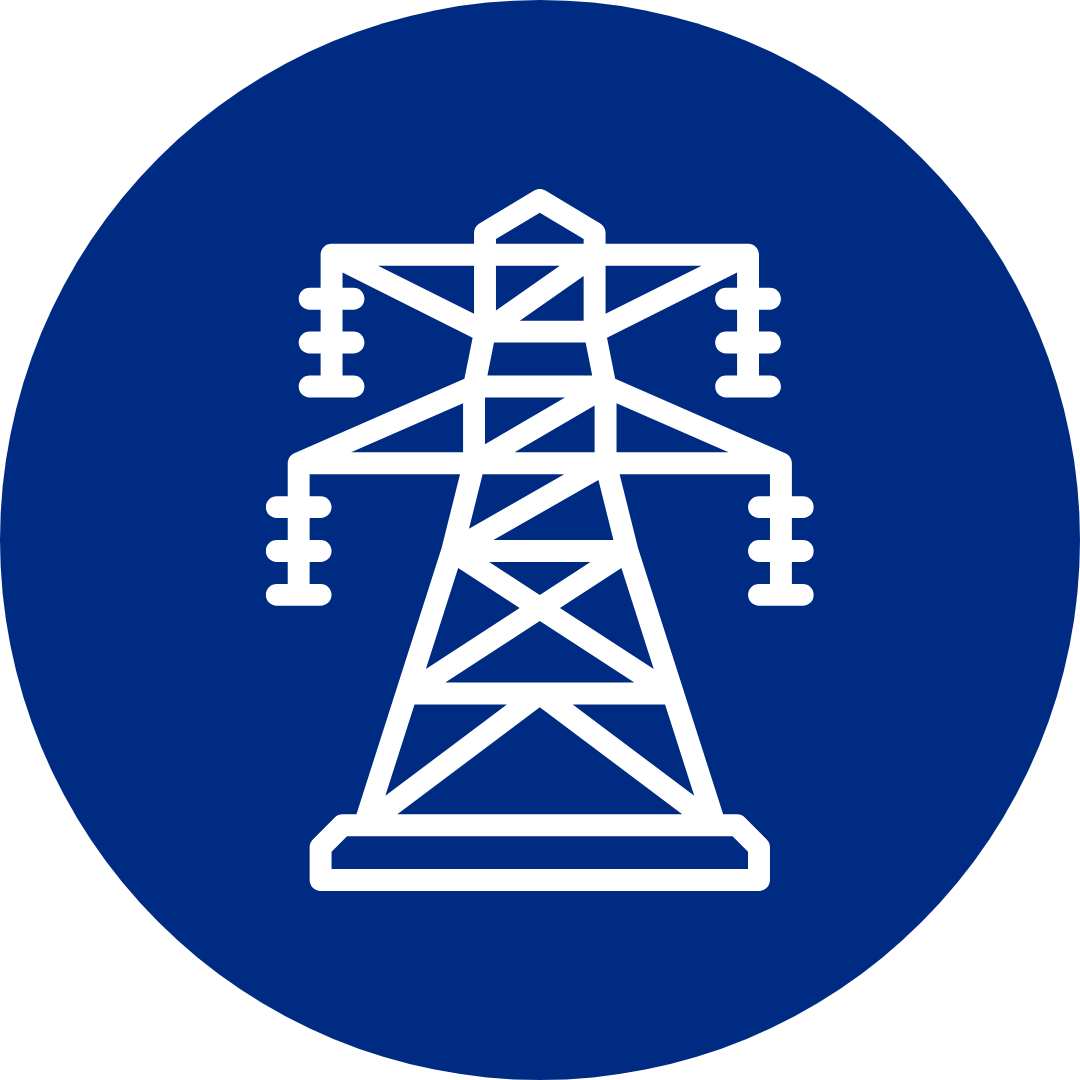Plenum rated (CMP) cables are designed to stop fire from spreading and produce less toxic smoke, making them the safest choice for areas where air moves through ceilings or ducts. These special cables have a fire-resistant jacket, which helps protect people and property in the event of a fire.
Many building codes require plenum rated cables for wiring in plenum spaces, especially in schools, offices, and hospitals. Regular cables do not meet the same safety standards and should only be used where rules allow.
Key Takeaways
Plenum rated cables are needed in areas where fire safety is critical.
The right cable rating depends on the space and regulations.
Plenum cables are labelled “CMP” for easy identification.
Which Cable Ratings Exist And Who Establishes Them?
Many different cable ratings have been developed to meet safety needs in buildings. These ratings mainly address how cables behave during a fire and how much smoke or toxic gas they may release.
Common Cable Ratings:
Rating | Full Name | Main Use |
CMP | Communications Multipurpose Plenum | Plenum spaces |
CMR | Communications Multipurpose Riser | Riser spaces |
CM/CMG | Communications General Purpose | General cabling |
CMX | Communications Limited Use | Residential, outdoor |
The National Fire Protection Association (NFPA) sets important fire safety standards. Their NFPA 70, called the National Electrical Code (NEC), outlines guidelines for cable ratings in the United States.
Building codes often require certain cable ratings for specific spaces. For example, plenum-rated (CMP) cables are needed for air handling or plenum spaces to restrict flame and smoke.
The NEC and local building codes often determine which type of cable installers must use. These rules are designed for maximum fire safety compliance.
Cable safety standards are usually tested under strict conditions. CMP cables, for example, must pass tests for maximum flame spread and low smoke production to meet NFPA 262 (previously known as UL 910).
Choosing the correct cable rating is not just about following rules. It is essential to protect people from fire and smoke hazards in buildings.
When Do You Need Plenum-Rated Cable?
Plenum-rated cable is needed when wiring passes through plenum spaces. A plenum space is any part of a building used for air circulation, often as part of an HVAC system—such as areas above a drop ceiling or inside air ducts. These zones are key for building ventilation.
Key signs you need plenum-rated cable:
Cables running through air ducts or return air ducts
Wires installed above drop ceilings with air flow
Any space used for HVAC air handling
In commercial buildings like offices, hospitals, and schools, building codes usually require plenum-rated cable for safety. This is because standard cable can release toxic smoke if it catches fire in these spaces.
Some residential buildings may also have plenum areas, especially modern flats with central air systems. Local building regulations and fire codes may demand plenum-rated cables in these cases.
Why it matters:
Plenum cables have low-smoke, fire-resistant jackets
They help prevent flames and smoke from spreading through HVAC systems
Required by many city and national codes for specific areas
Before installation, always check:
Are your cables entering areas with air circulation for HVAC or ventilation?
Do local or national regulations specify plenum-rated cable for your project?
Choosing the right cable ensures safety and keeps the building up to code.
Advantages Of Plenum-Rated Cable
Plenum-rated cables, such as Cat6 plenum cable, are specifically designed for use in spaces where fire protection is important. The materials used, often Teflon or low-smoke PVC, help prevent the spread of fire and greatly lower the risk of toxic fumes.
Key fire safety features:
Fire Resistance: Plenum cables use fire-resistant materials that slow down flame propagation.
Self-Extinguishing: These cables can self-extinguish, which further reduces fire hazards.
Low Smoke Emission: In case of a fire, they produce less smoke compared to standard PVC cables.
Reduced Toxic Fumes: There is less release of harmful smoke and toxic fumes.
When it comes to smoke emission, plenum cables behave much better than PVC cables. This makes them safer to use in air ducts, raised floors, and spaces used for ventilation.
Property | Plenum Cable | Standard PVC Cable |
Fire Resistance | High | Low |
Smoke Emission | Minimal | Heavy |
Toxic Fumes | Low | High |
Self-Extinguishing | Yes | No |
Cat6 plenum 1000ft cables are widely chosen for office and school buildings. They are designed not only for performance but also for safety, since indoor air quality can be affected by cables that emit harmful smoke.
Some plenum-rated cables are also UV resistant, which can help protect against damage when exposed to sunlight in certain installations. Not all riser or PVC cables offer this feature.
By using plenum cables instead of regular PVC cables, people can help minimise fire hazards and improve fire safety in buildings.
Why It’s Essential To Choose The Right Cable
Selecting the correct cable type is important for any wiring or networking system. Plenum rated cables provide extra safety compared to standard cables when installed in air-handling spaces, such as above suspended ceilings or inside raised floors. These areas allow air to circulate, which can spread smoke or toxic fumes quickly if the wrong materials are used.
Fire safety regulations are strict for plenum spaces. Using non-plenum cables, like standard PVC cables, can break building codes and lead to fines or delays in receiving permits. Plenum rated cables, such as Cat5e or Cat6, contain materials that resist flames and limit the release of harmful gases in a fire.
Electromagnetic interference (EMI) and crosstalk are common problems in cable installations, especially in larger settings like data centres or offices. Using high-quality plenum cables can help control these issues, making sure that devices such as WiFi networks, signal boosters, and distributed antenna systems (DAS) run smoothly.
Below is a comparison of cable suitability:
Type | Location | Fire Safety | EMI & Crosstalk |
Plenum Rated | Plenum spaces | High | Good protection |
Non-Plenum (PVC) | Non-plenum areas | Low | Basic protection |
Coaxial Cable | Varies | Depends | Limited |
Cabling also affects the performance of ethernet cables and coax cables. The correct plenum rated cable supports reliable signal transmission and reduces interference in complex systems. Proper cabling supports safe and efficient operation in both new builds and upgrades.
How To Tell If A Cable Is Plenum-Rated
To check if a cable is plenum-rated (CMP cable), first look at the cable jacket. Plenum-rated cables usually have clear markings or print on the jacket.
The jacket should display labels such as "CMP," "Plenum," "Plenum-Rated," or "Plenum Rated (CMP) Cable". It might also include the manufacturer’s name, cable type (for example, Cat6), and fire safety ratings.
Many times, these markings appear every 2 to 4 feet along the length of the cable. If "CMP" appears anywhere on the jacket, it is a plenum rated cable. Watch out for marks such as "CM" (general use) or "CMR" (riser cable), since these are not suitable for plenum spaces.
A simple table can help compare markings:
Cable Type | Marking on Jacket | Use |
Plenum | CMP, Plenum | Plenum spaces (above ceiling, below floor) |
Riser | CMR, Riser | Vertical riser shafts, not for plenum spaces |
General Purpose | CM, General Purpose | Open spaces, not for plenum or riser spaces |
Plenum ethernet cables, including Cat6 plenum rated cable, may also feel different from non-plenum cables. They often have a stiffer and smoother jacket made from special fire-resistant materials.
For added certainty, check the packaging or manufacturer’s documentation. They should confirm if the cable is plenum-rated and compliant with safety codes. Buying from trusted suppliers helps to ensure the cable meets plenum requirements.
When You Can Use Standard (CMR Or CM) Cable
Standard non-plenum cables like CM and CMR are widely used in many office and home buildings. These cables are suitable where strict fire safety rules for air-handling spaces do not apply.
CM (Communications Multipurpose) cables can be installed in open office areas, homes, or places where cables are not run inside air-handling ducts or plenum ceilings. They are acceptable for general use and meet basic fire safety standards.
CMR (Riser Rated) cables are designed for vertical spaces, such as between floors in riser shafts. Riser-rated cables have better flame resistance than CM cables, which makes them the right choice for running between storeys. However, they are not meant for plenum spaces.
Table: Common Uses for Standard Cables
Cable Type | Area of Use | Fire Safety Level |
CM | Homes, open offices | Basic |
CMR | Riser shafts, between floors | Enhanced (not for plenums) |
CMX | Limited-use, often outdoors | Minimal |
It is important to match the cable to the application. Do not use CM or CMR cables in plenum spaces, as they do not have the highest fire safety properties.
Standard cables like CM and CMR are more cost-effective and easier to find than CMP. They are a reasonable choice for most locations that do not involve air-handling pathways or strict safety codes.
Is Plenum Cable Necessary Inside A Conduit?
Plenum cable is designed for use in plenum spaces, which are areas in a building used for air circulation, like the space between a drop ceiling and the main ceiling. These cables use materials that resist fire and produce less smoke, meeting strict safety codes.
Whether plenum cable is needed inside a conduit depends on the type of conduit used. If the conduit itself is plenum-rated and installed in a plenum space, plenum-rated cable is often not required. Plenum-rated conduits, such as certain types of metal conduit or specialised innerduct, are made to resist fire and control smoke as well.
Conduit Type | Plenum Cable Needed? |
Plenum-rated innerduct | No |
Metal conduit | No |
Standard PVC conduit | Yes* |
*Standard PVC is usually not plenum-rated, so plenum cable may still be necessary if the installation is within a plenum space.
For safety, always check building codes before starting work. Regulations might require plenum cable, even inside a conduit, depending on the specific conditions and type of building. This is especially important in schools, offices, and hospitals.
Using non-plenum cable inside a plenum-rated innerduct, especially for fibre runs, is common practice when allowed by code. The main purpose is to lower cost while still meeting fire and safety standards.
Plenum cable and plenum-rated conduit both offer strong fire resistance, but their requirements are not always the same. Review project plans carefully to determine which material is best for each part of the installation.
Frequently Asked Questions
When should you use plenum-rated cable?
Plenum-rated cable should be used in areas where air flows freely for heating, ventilation, or air conditioning, such as above drop ceilings or below raised floors. National Electrical Code (NEC) and many local building codes require CMP cable in these plenum spaces. It may also be needed to meet insurance or occupancy permit requirements.
What is the difference between plenum and CMP?
"Plenum" describes the space in a building used for air circulation, while "CMP" is a specific cable rating. CMP stands for Communications Multipurpose Plenum. CMP cables are designed to be fire-resistant and produce less smoke, making them suitable and legal for use in plenum spaces.
What is the advantage of plenum cable?
Plenum cables have jackets made from special fire-resistant materials. This helps prevent flames from spreading and reduces toxic smoke in case of a fire. Using the right cable can also help avoid liability and keep insurance providers satisfied with safety standards.
Where do you need plenum cable?
Plenum cable is required in plenum spaces—these are areas used for air handling in buildings, such as air ducts or spaces above ceiling tiles. Some regulations may also ask for plenum cables in public buildings like hospitals and schools, even outside traditional plenum areas.
What two areas might plenum cable be required to be used?
Plenum cable is often required above suspended ceilings and inside air handling ducts. These locations carry airflow, which can spread smoke and fire quickly if standard cables are used.
What is the main difference between plenum and non plenum cable?
The main difference is in the materials of their jackets. Plenum cables use fire-safe materials that limit the spread of flames and smoke. Non-plenum cables, such as riser or general-purpose cables, do not meet the same safety standards and cannot legally be used in plenum spaces.
What is the main purpose of the plenum?
The plenum is a special area in buildings used for air flow as part of heating and cooling systems. It allows large volumes of air to move to different parts of the building. As these spaces can spread fire and smoke, strict safety measures for any installed cable are necessary.
Alarm Cable
Arctic Grade Cable
Armoured Cable
Audio & Speaker Cable
Auto Cable
Bare Copper
Belden Equivalent Cable
Co-axial Cable
Data Cable
DC Telecom Cable
Defence Standard Cable
Emergency Lighting & Fire Detection Cable
EV Cable
Festoon
![Loose Tube Fibre Cross Section]()
Fixed Wiring PVC & LSOH Cable
Flatform
Flexible Control Cable
Flexible PVC Cable
Flexible Rubber Cable
General Wiring Cable PVC & LSOH
High Temperature Cable
High Voltage Cable
![5308 p1 t2 cat Cross Section]()
LSOH Flexible Cable
Medium Voltage Cable
NYY & N2XH Cable
Protected Wiring Cable
Silicone Cable
Solar Cable
Split Concentric Cable
Spiral Cable
Temporary Power Cable
Tri-Rated Cable
Welding Cable
Alarm Cable
Arctic Grade Cable
Armoured Cable
Audio & Speaker Cable
Auto Cable
Bare Copper
Belden Equivalent Cable
Co-axial Cable
Data Cable
DC Telecom Cable
Defence Standard Cable
Emergency Lighting & Fire Detection Cable
EV Cable
Festoon
![Loose Tube Fibre Cross Section]()
Fixed Wiring PVC & LSOH Cable
Flatform
Flexible Control Cable
Flexible PVC Cable
Flexible Rubber Cable
General Wiring Cable PVC & LSOH
High Temperature Cable
High Voltage Cable
![5308 p1 t2 cat Cross Section]()
LSOH Flexible Cable
Medium Voltage Cable
NYY & N2XH Cable
PAS - BS5308 Instrumentation Cable
Protected Wiring Cable
RS-232 Cable
RS-485 Cable
Silicone Cable
Solar Cable
Split Concentric Cable
Spiral Cable
Telephone Cable
Traffic Signal Cables
Temporary Power Cable
Tri-Rated Cable
Welding Cable
Airports
Automation & Process Control
![Automotive]()
Building & Construction
Communication & Telecommunication
Data Centres
Defence
![DNO 1]()
E-Mobility
Food & Beverage
Marine & Offshore
Mining, Drilling & Tunnelling
OEMs
Oil, Gas & Petrochemical
Rail & Metro
Renewable Energy
Switchgear
Power
Water Treatment













































